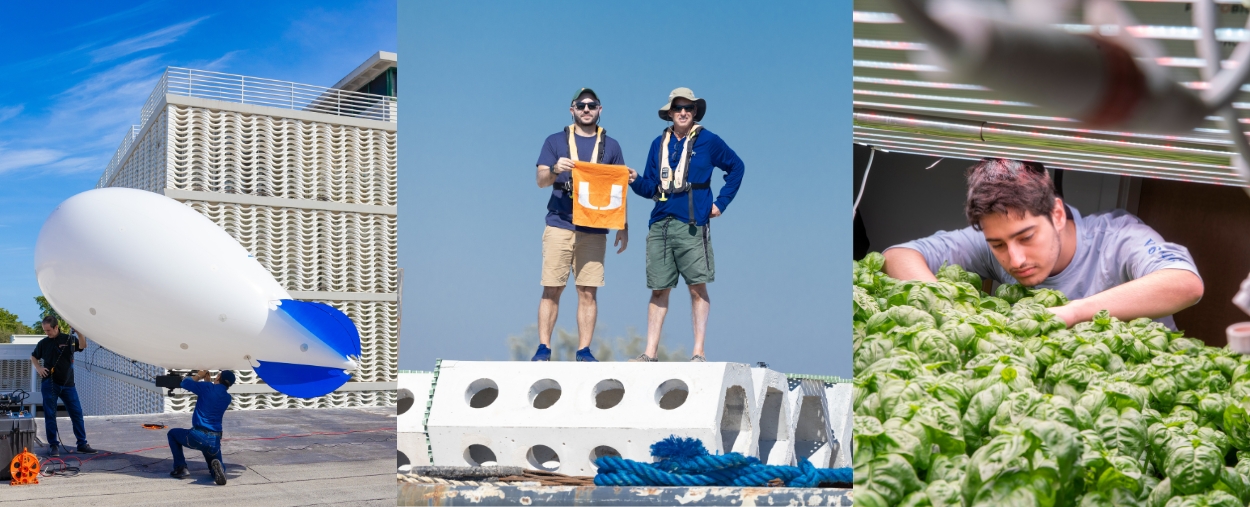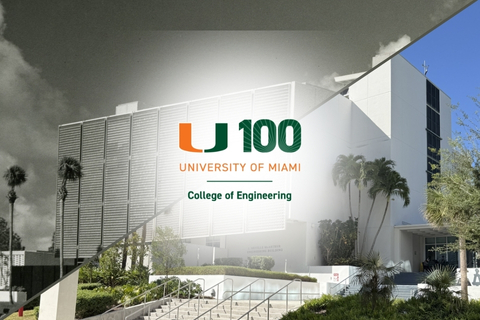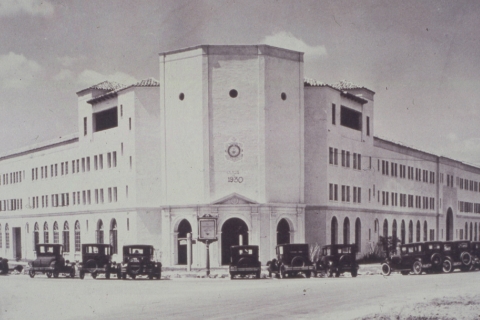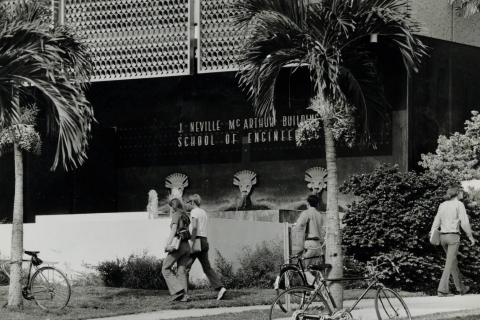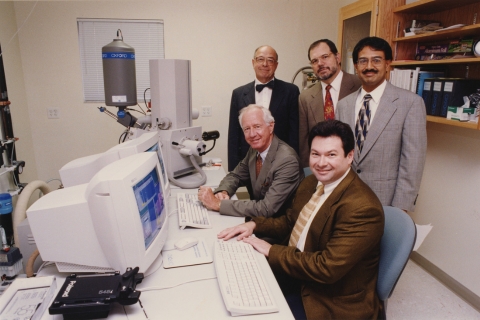Humble Beginnings
The College of Engineering traces its roots back to the 1920s, when courses in aviation and surveying were first offered in the Anastasia Building in Coral Gables. Although financial struggles delayed the formal establishment of an engineering school, early courses and experiments helped lay the groundwork for what would become a hub of innovation.
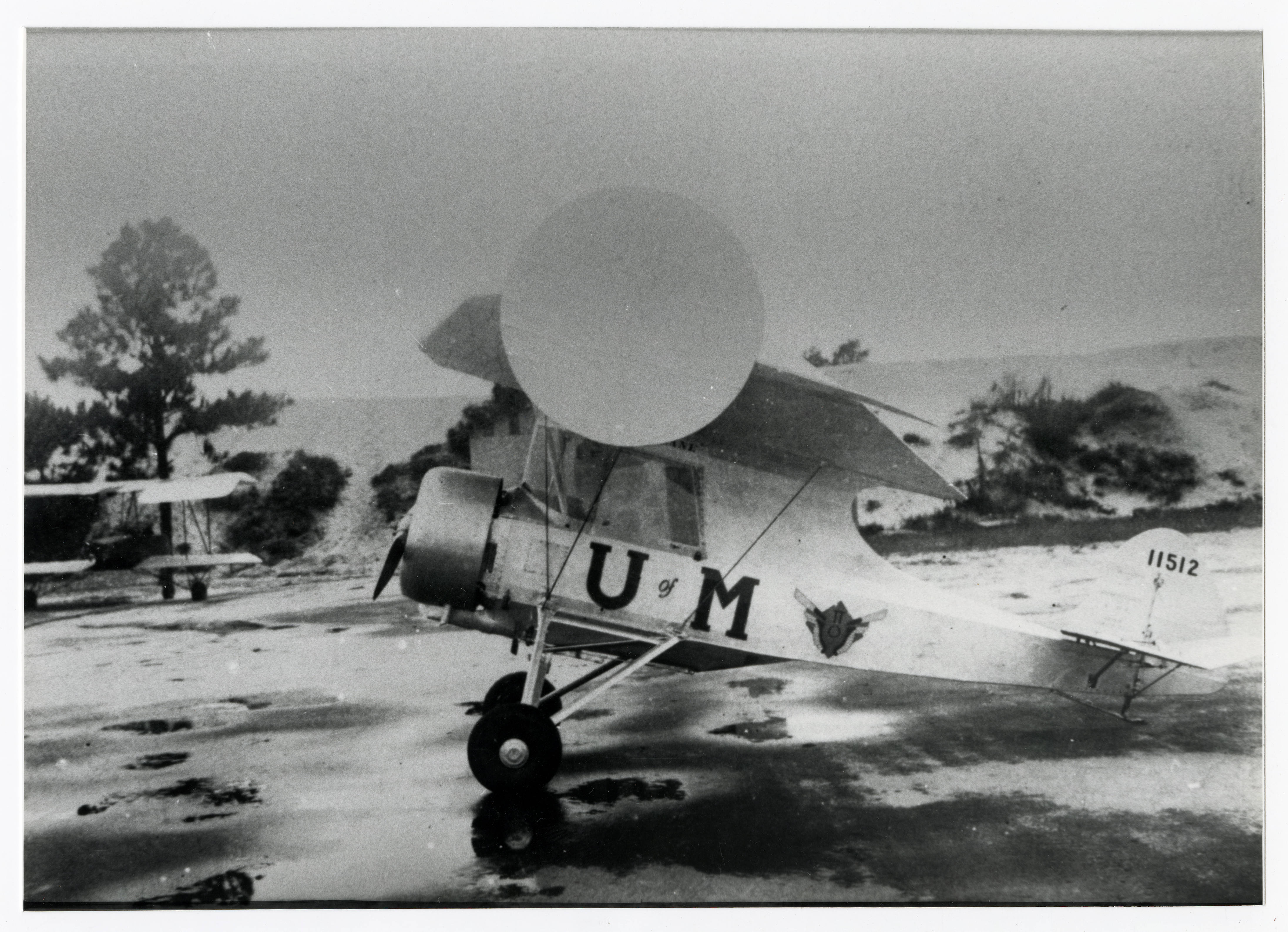 One of these early projects was the vacuplane, an experimental aircraft developed at the University in the 1930s. Though it didn’t achieve widespread success, it showcased the University’s early dedication to innovation.
One of these early projects was the vacuplane, an experimental aircraft developed at the University in the 1930s. Though it didn’t achieve widespread success, it showcased the University’s early dedication to innovation.
 With the onset of World War II, the University expanded its engineering-related programs to support the war effort, preparing more than 8,000 members of the U.S. and British Royal Air Force for critical roles in fields like navigation and precision bombing, as part of the War Training Act.
With the onset of World War II, the University expanded its engineering-related programs to support the war effort, preparing more than 8,000 members of the U.S. and British Royal Air Force for critical roles in fields like navigation and precision bombing, as part of the War Training Act.
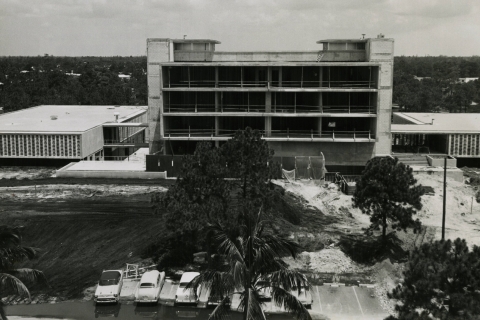
Postwar Growth and a New Era for Engineering
Following the war, demand for skilled engineers grew, and in 1947, the School of Engineering was officially established. The school initially enrolled 400 students, the majority of whom were veterans taking advantage of the GI Bill. This postwar period saw a surge in aviation advancements, and by the 1950s, enrollment had tripled to 1,200 students.
Generous contributions, including a $2 million donation from J. Neville McArthur, supported the construction of a dedicated engineering building, cementing the school’s presence on the Coral Gables Campus. Engineers were welcomed into this building on Tuesday, September 1, 1959.

Delicious Details:
Darrell F. Fleeger, Architect of the J. Neville McArthur building once described the building's outer wall as "potato-chip like".
Engineering for the Space Age and Energy Challenges
The Space Race between the United States and the Soviet Union in the 1960s opened new opportunities in aerospace engineering. Many graduates went on to work on pivotal NASA projects, including the historic Apollo missions and the later Space Shuttle program.
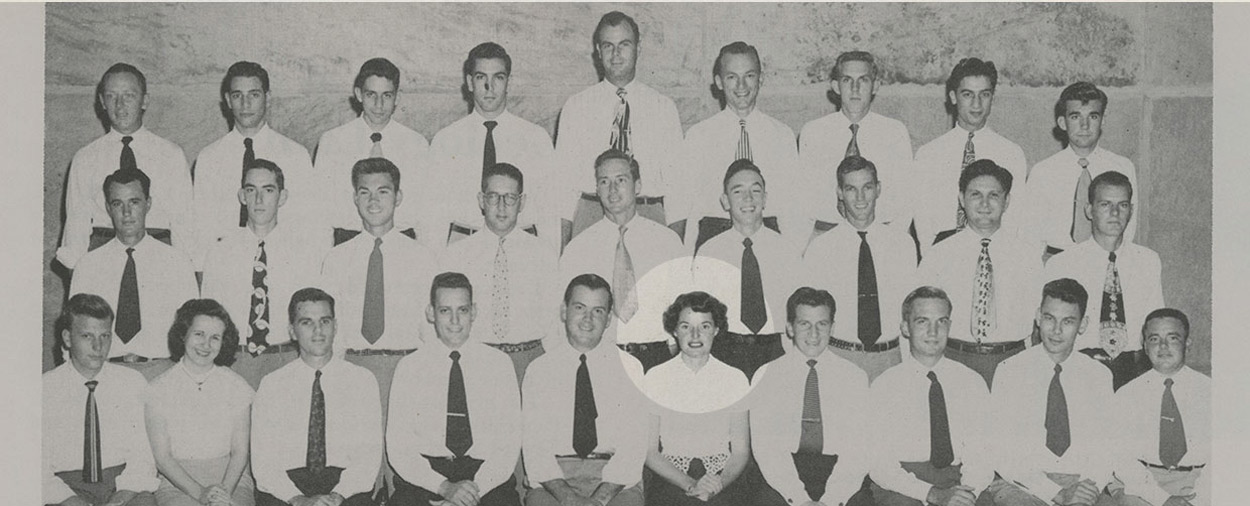 Breaking Barriers: Shirley Hoffman Kilkelly, a 1952 graduate, was among the first women to earn an engineering degree from the University of Miami. In the late 1960s, she joined Grumman Aircraft Engineering Corporation, where she ensured Apollo 11’s lunar module, Eagle, functioned properly after enduring the harsh conditions of space flight before its historic landing on the moon’s Sea of Tranquility on July 20, 1969.
Breaking Barriers: Shirley Hoffman Kilkelly, a 1952 graduate, was among the first women to earn an engineering degree from the University of Miami. In the late 1960s, she joined Grumman Aircraft Engineering Corporation, where she ensured Apollo 11’s lunar module, Eagle, functioned properly after enduring the harsh conditions of space flight before its historic landing on the moon’s Sea of Tranquility on July 20, 1969.
In the following decade, the global energy crisis of the 1970s underscored the need for alternative energy solutions, and the School of Engineering was at the forefront of research into solar energy and hydrogen storage.
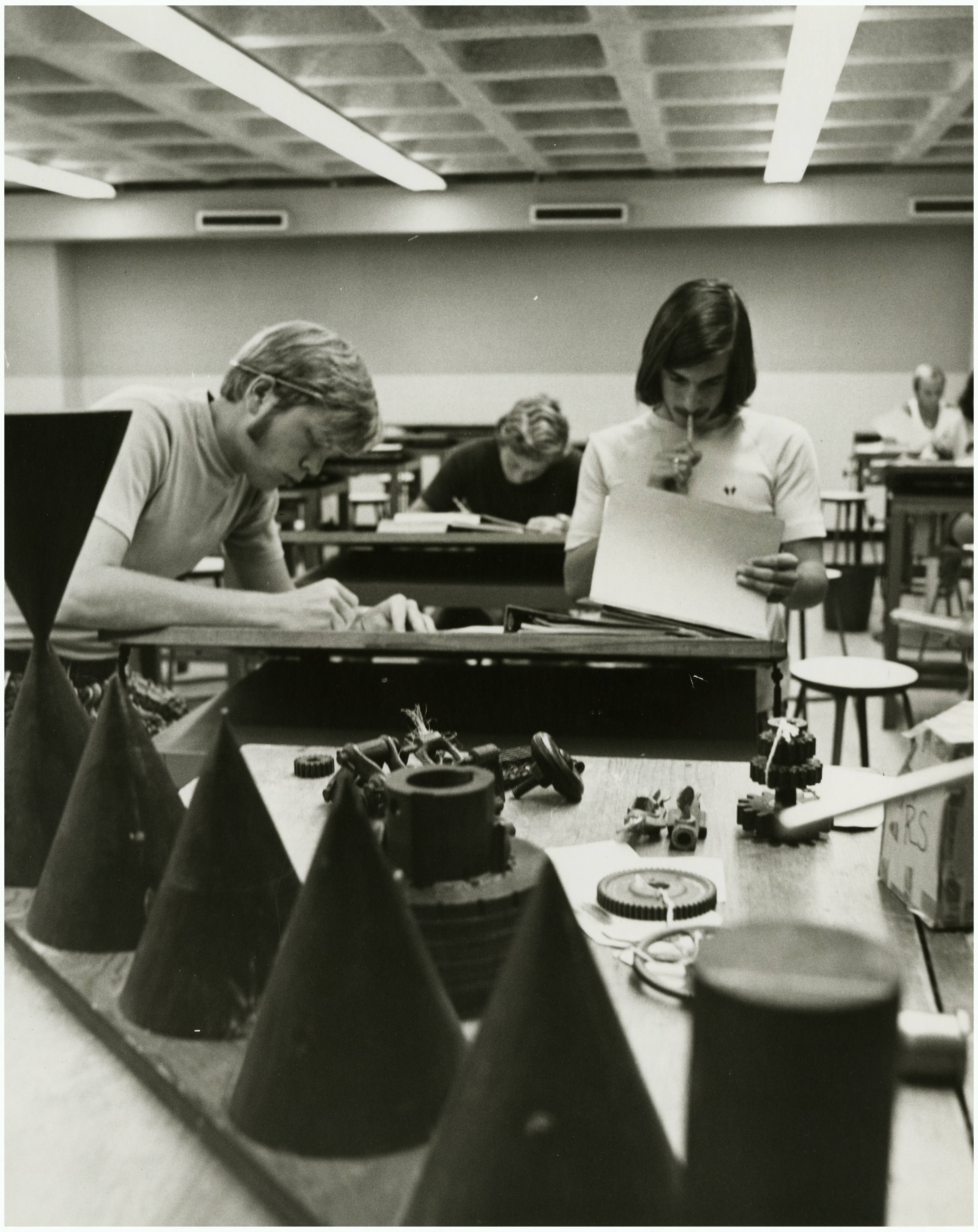
As the school expanded, faculty members voted to give the architecture program autonomy, officially establishing the College of Engineering and the School of Architecture as separate entities in 1983.
Innovating in the Digital Age
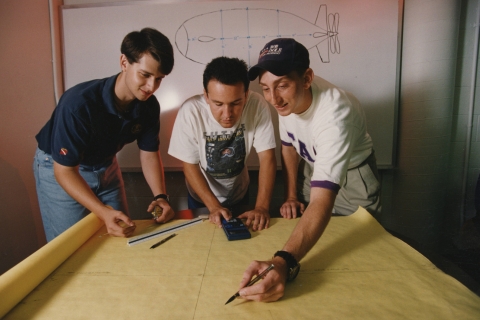 With the dawn of the Information Age in the 1990s, the college positioned itself as a leader in telecommunications and information technology, playing a key role in advancing satellite communications, microchip technology and supercomputing. Programs in cybersecurity were also launched to keep pace with the tech-driven economy.
With the dawn of the Information Age in the 1990s, the college positioned itself as a leader in telecommunications and information technology, playing a key role in advancing satellite communications, microchip technology and supercomputing. Programs in cybersecurity were also launched to keep pace with the tech-driven economy.
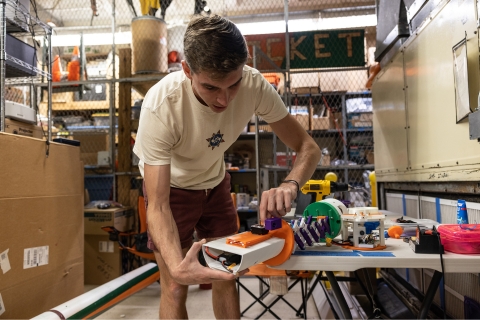 In the 21st century, the college continued to break new ground by establishing the Johnson & Johnson 3D Printing Center of Excellence. Students, faculty members, and industry professionals could access cutting-edge 3D metal printers to manufacture body parts for orthopedics or engine parts for rockets.
In the 21st century, the college continued to break new ground by establishing the Johnson & Johnson 3D Printing Center of Excellence. Students, faculty members, and industry professionals could access cutting-edge 3D metal printers to manufacture body parts for orthopedics or engine parts for rockets.
By 2021, the college expanded to six departments, introducing programs in chemical and materials engineering, as well as new research initiatives in aerosol science, positioning it as a leader in environmental and atmospheric studies.
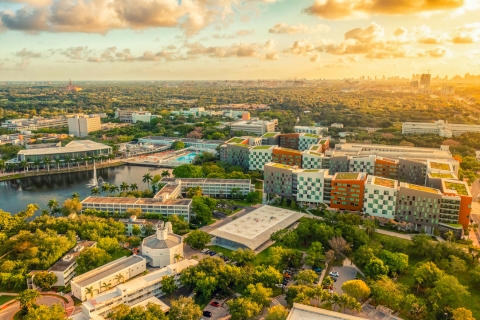
A New Century of Innovation
As the University of Miami embarks on its second century, the College of Engineering continues to expand its impact locally, nationally and globally — even reaching into space. The college now pursues a series of strategic initiatives in emerging fields, including health tech, digital tech, nanotech, cleantech, and fintech, with a commitment to addressing some of the world’s most pressing challenges.
